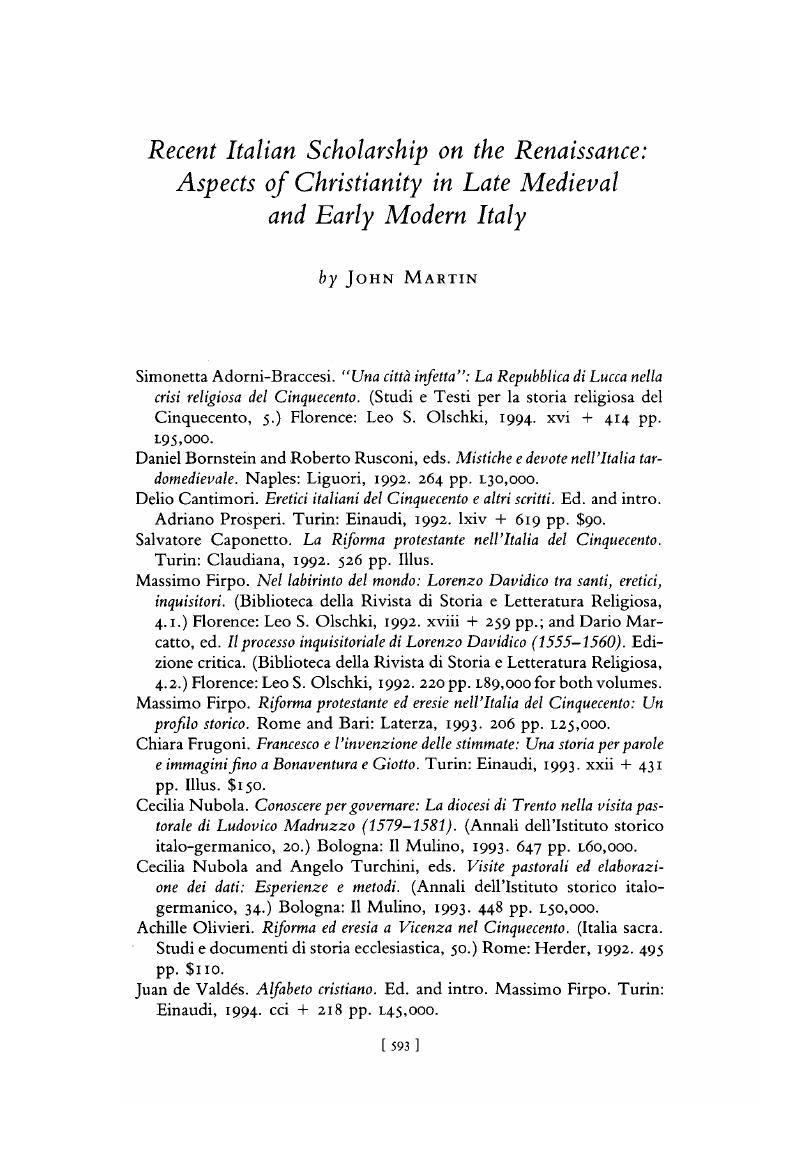Published online by Cambridge University Press: 20 November 2018

1 My emphasis here is on the iconography. The beguine Mary of Oignies, who died shortly before Francis, also had the stigmata, though hers were self-induced. But even if Francis was not the first to have had them, “il est bien remarquable, d'autre part, qu'antdrieurement au XIII siecle, il ne soit jamais question de ce phenomene.” (“Stigmatisation“ in Dictionnaire de theologie catholique [Paris: Librarie Latouzey et And, 1941], vol. 14, pt. 2, col. 2617.)
2 University Park and London: Pennsylvania State University Press, 1988.
3 “Quando dico Giotto,” she writes, “dico un nome di comodo; per la mia ricerca non e necessario distinguere gli interventi delle maestranze; anche per la data mi attesto su quella che riscuote nei critici il maggior consenso” ﹛Francesco e I'invenzione delle stimmate, 228, n. 42).
4 Richard Offner, “Giotto, Non-Giotto” in James Stubblebine, ed., Giotto: The Arena Chapel Frescoes (New York and London: Norton, 1969), 135-55; a n d Alistair Smart, The Assisi Problem and the Art of Giotto: A Study of the Legend of St. Francis in the Upper Church of San Francesco, Assisi (New York: Hacker Art Books, 1983). From the perspective of a non-art historian, I must confess my bafflement on this point. How does one explain the gap between Anglo-American scholarship, which appears to have demonstrated that Giotto could not have been the author of the San Francesco frescoes at Assisi, and the tendency among many Italian scholars to assume or to pretend that these works are indeed those of this early Renaissance master? Are we confronting a case in which an admirable work—to cite a celebrated Foucauldian paradox—does more to create the author than vice versa? Or is it that Italian connoisseurship simply remains conservative in its general outlook and is therefore quite fearful of overturning received traditions? I should add here that the view that it was Giotto who painted the Bardi frescoes is not in doubt.
5 A substantially revised and up-dated version of this work will soon be available in English: Women and Religion in Medieval and Renaissance Italy (Chicago: University of Chicago Press, forthcoming).
6 Andre Vauchez, La sainted en Occident aux derniers siecles du Moyen Age, d'apres les proces de canonisation et les documents hagiographiques (Rome: Bibliotheque des Ecoles d'Athenes et de Rome, 1981).
7 Marino Berengo, Nobili e mercanti nella Lucca del Cinquecento (Turin: Einaudi, 1965); Arturo Pascal, Da Lucca a Ginevra: Studi sulla emigrazione religiosa lucchese a Ginevra (Pinerolo: Unitopografia pinerolese, 1935); and Renzo Ristori, “Le origini della Riforma a Lucca,” Rinascimento 3 (1952), 269-92.
8 Massimo Firpo and Dario Marcatto, eds., II processes inquisitoriale del cardinal Giovanni Morone. Edizione critica. 5 vols. (Rome: Istituto storico italiano per l'eta moderna e contemporanea, 1981-1989)—a work that may now be studied in conjunction with Firpo's Inquisizione Romana e controriforma: Studi sul cardinal Giovanni Morone e ilsuoprocesso d'eresia (Bologna: II Mulino, 1992). This latter volume, unfortunately, reached me too late for inclusion in this review. For his early work on Valdes, see his Tra “alumbrados“ e “spirituali“: Studi su Juan de Valdes e il valdesianesimo nella crisi religiosa del Cinquecento italiano (Florence: Leo S. Olschki, 1990).
9 The proceedings held against Davidico at Novara are published separately in Firpo and Marcatto, “Giovanni Morone e Lorenzo Davidico: Gli incerti del ‘reformare sacra per homines’ e le pratiche del Sant'Ufficio,” Bollettino storico per la provincia di Novara 82 (1991), I-I39.